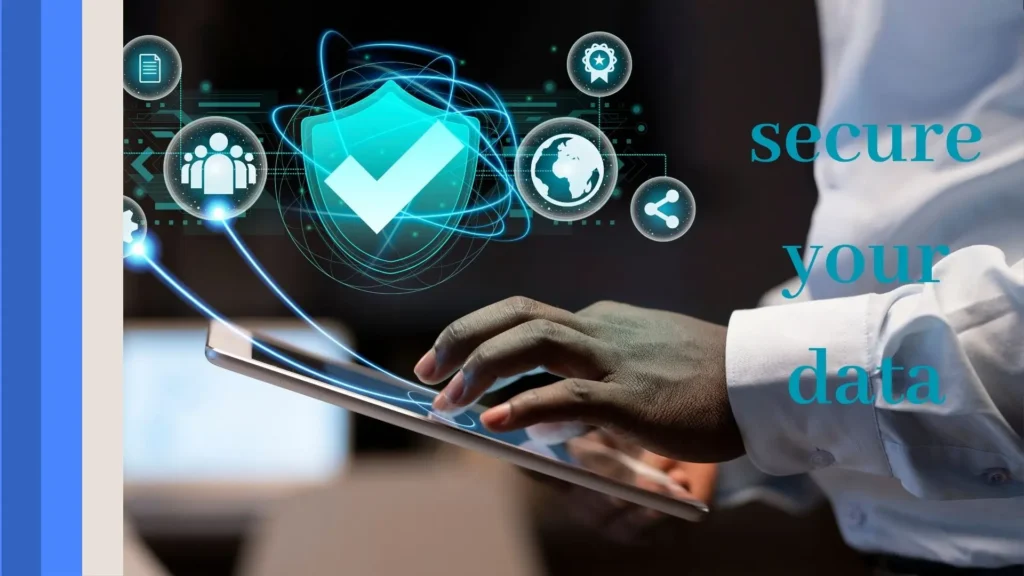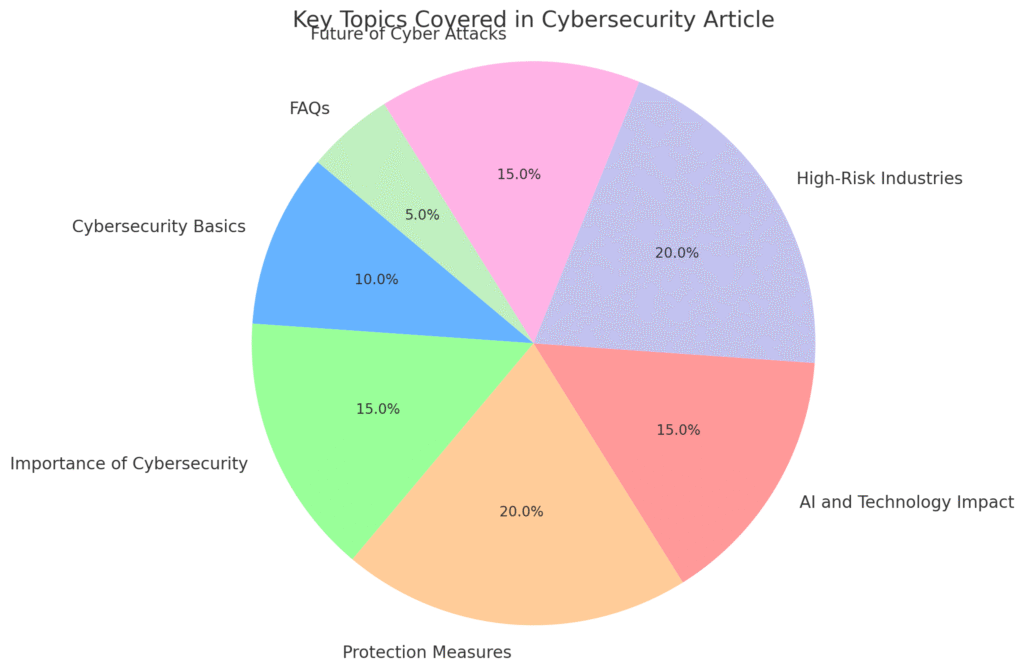The use of Artificial Intelligence (AI) is altering how we combat cybercrime. It is able to process very large volumes of information in real time and find unusual activity warning of a hacking attempt. Artificial intelligence aids in the production of intelligent firewalls, recognition of fraud, and even in preventing hazards before they come.
Nonetheless, the more sophisticated forms of attacks are also being initiated by hackers through AI. Like in the case of being able to build fake videos (deepfakes), decipher passwords, disseminate thousands of phishing emails within seconds by use of AI. As the increased use of smart devices, cloud storage, and linked apps becomes the norm, the potential number of cyber threats builds.
That is why cybersecurity needs to employ AI not only as a protective measure but as an advancement of the attackers. The most important factor in guarding the digital systems in the new era is being proactive as opposed to being reactive.
Why Cybersecurity Is Important
In our life, we now do 90 percent of the things with the help of digital tools: shopping, socializing, banking, working and so on. This all entails website storage and sharing of some sensitive personal data on the internet like credit card numbers, passwords and bank account numbers. Majority of this information is stored in cloud systems such as Google drive or dropbox and this is why these are a major target to hackers.
That is why the issue of cybersecurity gains significance.
As a person, a small entrepreneur, or a member of a big organization, you rely on digital systems. More smartphones, smart devices (Internet of Things) and cloud storage also imply more points of entry through which criminals can attack.
Data protection is becoming an issue of concern by governments around the world. As an example, in Europe, the General Data Protection Regulation (GDPR) requires businesses to disclose data breaches, requires appointment of data protection officers, and manages personal information more responsibly.

In the US, every state has such legislation, according to which the company must inform people in a timely manner about the compromised personal data.
California became the first U.S. state with the legislation requiring timely notification of a data breach in 2003. Even, victims may file a lawsuit and recover financial losses in case their data is used incorrectly. Such changes are driving adoption of more secure cybersecurity standards, including those standards developed by the National Institute of Standards and Technology (NIST).

How to Protect Your Business from Cybercrime
Optimizing your cybersecurity does not need advanced technological concepts. Protecting your information has some basic steps.
Educate Staffs
The majority of data breaches occur due to human error click on suspicious links or open false mails. Indeed, 2019 Incident Response Report shows that close to 90 percent of breaches occurred due to human mistake. Avoiding most of the attacks is possible by teaching the employees to identify and act on such threats. Such aspects as should be training include:
- What is cyber threat?
- What is phishing and ways to prevent it?
- What does ransomware mean?
- Social engineering- What is it?
- What are the ways to identify fake Internet sites and references?
Even easy awareness will make a huge difference to the protection of your company against cyber menace.
Secure Delicate Data
It is imperative that security tools are used that keep track of usage and leakage of data. Hackers always seek to find out open information to gain access to systems. Your public data, or the one that is not properly secured, may become a cybercrime entry point. Purchase equipment that keeps an eye on your systems as well as third party suppliers.
Third party risk management
The vast majority of businesses depend on other companies in form of vendors, suppliers, and service providers. Even when these are third parties that are not secure, your data might remain to be in danger. Evaluate your vendors with automated tools and make sure that they practice safe cybersecurity.

Why do I need cybersecurity is a question that businesses should stop asking in the digital world today. and rather than saying “”What is the law and how can I breach it?” you should say instead “”How can I lead a more cybersecurity life and in order to abide with the law and also not to lose face?”
Cybersecurity in the Age of AI and Technology
The use of Artificial Intelligence (AI) is altering how we combat cybercrime. It is able to process very large volumes of information in real time and find unusual activity warning of a hacking attempt. Artificial intelligence aids in the production of intelligent firewalls, recognition of fraud, and even in preventing hazards before they come.
Nonetheless, the more sophisticated forms of attacks are also being initiated by hackers through AI. Like in the case of being able to build fake videos (deepfakes), decipher passwords, disseminate thousands of phishing emails within seconds by use of AI. As the increased use of smart devices, cloud storage, and linked apps becomes the norm, the potential number of cyber threats builds.
That is why cybersecurity needs to employ AI not only as a protective measure but as an advancement of the attackers. The most important factor in guarding the digital systems in the new era is being proactive as opposed to being reactive.
Industries Most at Risk from Cyber Attacks
1. Manufacturing
The sector of manufacturing is more automated and with smart devices (referred to as Industry4.0), creating new avenues of entry by the hackers. Here the cyberattacks can interfere with production, blueprints or even impact the supply chain.
2. PBS
Marketing companies, law firms, or respectively consulting companies can work with sensitive information of clients. In case they are breached, it may result in huge financial losses, lawsuits, and depreciation of their brand image.
3. Healthcare
There are connective devices and digital health records in clinics and hospitals. This renders them high-value target. Chances are high that the medical records will fetch a good price at the black market and any leakage can pose serious implications on patient safety and privacy.
4. Financial Services
Financial institutions and banks are a typical example. Online banking and real-time payment system poses a continuous risk of hacking. Trust in this industry should not be lost under any circumstances, as it would lead to great long-term losses, and therefore, effective cybersecurity is necessary.
5. Energy and Utilities
Water systems and power plants are instrumental in a country. Here, the attacks do not only pose a threat to finances but also to the national security. Ransomware and other attacks need to be avoided using the best level of security systems in this sector.
The Future of Cyber Attacks
In the future cyber attacks will become more intelligent and lethal. The swiftness of the attack, its undetectability, and the success ratios are already within the scope of the AI and automation use by hackers. They are attacking even the smart homes to remote working tools and cloud servers.
Quantum computing is one of the new threats. This is a very strong form of technology and in future it has the ability of cracking down the encryption technique that is being used to safeguard most of the online data. This may render lots of systems susceptible to massive breaches.
In order to be ready, a cybersecurity system will always need to be updated, which would include an update of software, superior encryption, and user training. It will be important to be vigilant and rather changeable in order to be able to defend against the cyber threats of tomorrow.
Frequently Asked Questions (FAQs)
The practice of safeguarding computer systems and networks, as well as data against any unwarranted intrusion or assault, is referred to as cyber security.
It prevents your personal and business data being stolen, damaged or misused.
Cybersecurity is required by everyone including individuals, businesses, schools, hospitals, and governments in the current connected world.
The prevalent threats are viruses, phishing mails, ransomware, identity loss, and data leakage.





